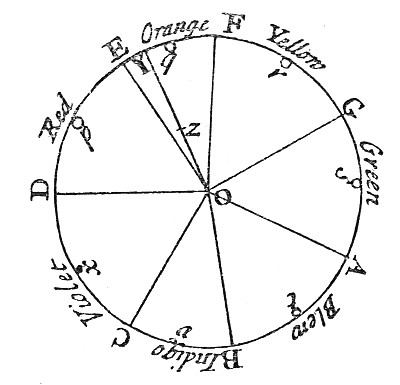What is ROYGBIV Stand For? ROYGBIV Meaning
Are you curious about what ROYGBIV stands for? Stick around as we share an in-depth explanation…
You’ve no doubt seen rainbows after rainstorms; beautiful visual elements in the sky full of colors. But have you ever wondered why the rainbow has so many colors?
And why do these colors appear in the same order every time?
The organization of colors in the rainbow is called the ROYGBIV, short for red, orange, yellow, green, blue, indigo, and violet.
These seven colors represent the rainbow, proving that indeed, colors are intrinsic to light.
Isaac Newton was the first person to demonstrate the prism experiment, revealing the seven colors of ROYGBIV.
These fundamental colors represent the entire spectrum of hues today, something analogous to a musical scale, as Isaac Newton said.
In this article, we are going to explore the history of ROYGBIV and find out how Isaac Newton discovered and named the colors.
Read on…
Newton’s 1665 Theory
In primary school, you probably learned about ROYGBIV in art or science class. This color theory was actually discovered by English physicist and mathematician Isaac Newton.
It was back in 1665 when Newton first passed white light through a prism and watch the colors unfold.
He was able to identify the seven constituent colors—red, orange, yellow, green, blue, indigo, and violet.
Before this discovery, Aristotle had already framed an idea on the theory during his time. Aristotle believed that all colors came from white and black, or lightness and brightness.
Additionally, he also theorized that all colors were related to the four elements, water, fire, air, and earth. This theory was replaced when Isaac Newton’s theory was established.
Newton believed that even though there were many hues that could be seen, these colors were ‘analogous to the notes of the musical scale.’
He was with a friend when he projected natural light through a prism, revealing the seven hues. In his diagrams, Newton was able to introduce the colors orange and indigo, which correspond to the octatonic scale.
After a series of data collection, Newton discovered that he was wrong but still came up with an explanation of how the colors are equivalent to an octave.
Even if the 1665 theory doesn’t hold on, the prism experiment paved the way for discoveries in the 1900s. This knowledge helped reveal more about the nature of light and how colors differ and interact with one another.
What is ROYGBIV?
In this color theory, three colors are called primary colors—red, blue, and yellow. Primary colors, when mixed together, form secondary colors.
In ROYGBIV, the secondary colors present are green, orange, and violet. Indigo is another type of violet, closer to blue in the color wheel.
There are two reasons why indigo is included in ROYGBIV.
First, Newton wanted to match the colors in the rainbow to the notes in the Dorian scale. Under Newton’s Octave theory, orange and indigo were placed in half steps, between E and F, or between B and C.
Hence, Newton is trying to bridge the gap between blue and violet by including indigo in the theory.
The next reason involves the history of the number seven in paranormal science.
Seven is in fact considered a sacred number in the secretive science; hence, Newton figured it made sense to add another color to have seven colors in the spectrum.
As you may know, indigo is a tertiary color. Although some people believe their indigo should be excluded from the ROYGBIV theory, it is still as important as the other six colors.
This is because indigo still appears to be part of the rainbow, a set of colors that come from the prism.
ROYGBIV in Marketing
Rainbows have become a powerful marketing image, especially as they are universally recognized. This has helped marketers and business owners establish substantial branding.
In the retail industry, you can see a lot of brands using the rainbow to indicate fun elements, especially within the food and children’s toy industries.
Skittles, for instance, uses rainbow packaging to entice people, both children, and adults, to try their delicious candies. The packaging speaks for the brand itself, saying its products are fun and delicious.
Aside from using all ROYGBIV colors, others simply select a hue and use it for visual representation. For instance, there are brands using indigo, green, and red colors.
Bottom Line
The colors in the ROYGBIV theory are popularized by their organization in the rainbow. As a whole, the colors look amazing together, which is why this visual is used by a lot of people.
In making art, you have to familiarize yourself with this set of colors to find it useful in your work. Be it using red, orange, yellow, green, blue, indigo, or violet, you can always find the perfect hue for your artwork.
We hope you enjoyed this lesson about ROYGBIV and the person behind it!
Cheers!
Read Latest Posts

Hi, I'm Anthony Tran! Welcome to my site. I live in Arizona and am obsessed with all things related to building an Online Business and working from home. Learn about my journey here.
Follow Online



